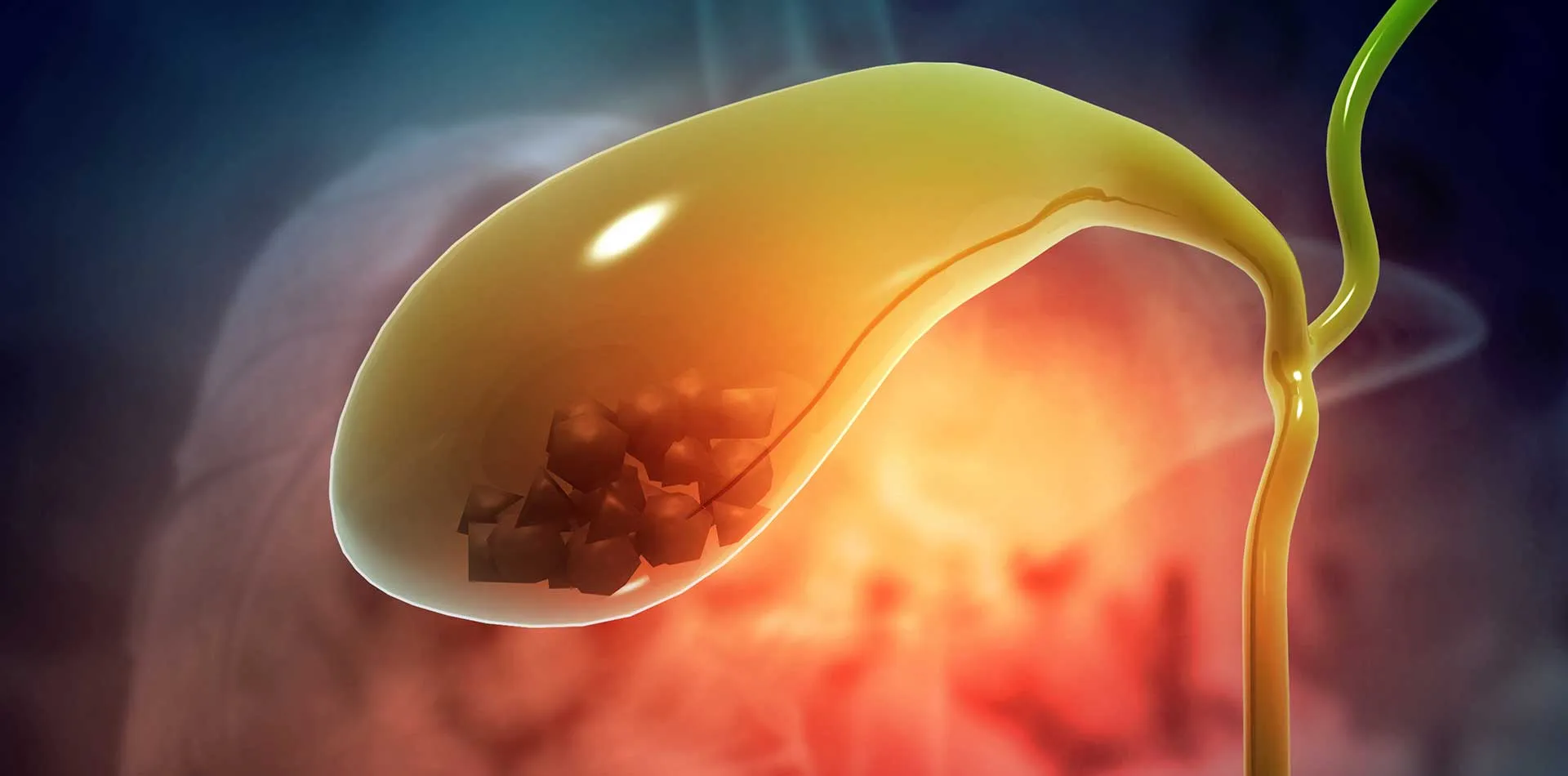
Gallstones are small hardened pieces of stones that accumulate in the gallbladder, a small, pear-shaped organ on the right side of the abdomen, under the liver. The gallbladder contains a digestive fluid known as bile that is released into the small intestine.
Gallstones range in sizes from a tiny grain of sand to big as the golf ball and may develop as single or multiple gallstones simultaneously.
The treatment for gallstones where symptoms appear requires gallbladder extraction surgery.
Often, gallstones may have no signs, but when a gallstone lodges in a duct, creating a blockage, the symptoms may appear, such as sudden and rapidly aggravating pain in the upper right portion or center of the abdomen. Also, the other signs are back pain between the shoulder blades, pain in the right shoulder and nausea or vomiting. The pain and symptoms may last for several minutes to a few hours.
Get advice from the doctor when the symptoms are a cause of concern and immediate medical care when serious gallstone complications occur. These are abdominal pain so intense where you can't sit still or find a comfortable position, high fever with chills, yellowing of the skin and the whites of the eyes (jaundice).
The cause of gallstones remains unknown, but some reasons why it occurs as per the doctors are:
• Too much cholesterol in bile: Generally, bile has enough chemicals to dissolve the cholesterol excreted by the liver. But when the liver passes more cholesterol than the bile can dissolve, this excess cholesterol forms into crystals and eventually into stones.
• Too much bilirubin in bile. Bilirubin is a chemical produced when the body breaks down red blood cells. The excess bilirubin contributes to gallstone formation. Some medical conditions may result in the liver making too much bilirubin, including liver cirrhosis, biliary tract infections and certain blood disorders.
• Gallbladder doesn't empty correctly. When the gallbladder doesn't empty thoroughly or often enough, bile gets very concentrated, contributing to the formation of gallstones.
Different gallstones may form in the gallbladder, such as:
• Cholesterol gallstones appear yellow, composed mainly of undissolved cholesterol, but may comprise of other components.
• Pigment gallstones - dark brown or black stones that appear due to too much bilirubin.
Factors that raise the risk of gallstones are gender - mainly females, age over 40, being a Native American or a Hispanic of Mexican origin. The other reasons are being overweight or obese, sedentary, pregnant, a high-fat or high-cholesterol diet. Eating a low-fiber diet, having a family history of gallstones, health conditions like diabetes, certain blood disorders, like sickle cell anemia or leukemia, liver disease, losing weight very quickly, or taking medications that contain estrogen, like oral contraceptives or hormone therapy drugs.
Complications of gallstones are:
• Inflammation of the gallbladder. When gallstone gets lodged in the neck of the gallbladder, it causes inflammation of the gallbladder - cholecystitis, resulting in severe pain and fever.
• Blockage of the common bile duct. Gallstones block the tubes (ducts) through which bile flows from the gallbladder or liver to the small intestine, causing severe pain, jaundice and bile duct infection.
• Blockage of the pancreatic duct. The pancreatic duct - a tube that runs from the pancreas and connects to the common bile duct before entering the duodenum. Pancreatic juices aid in digestion, flow via this pancreatic duct. When this has a blockage, it leads to inflammation of the pancreas, causing intense, constant abdominal pain and may require hospitalization.
• Gallbladder cancer. For those with a history of gallstones, the risk of gallbladder cancer rises.
These preventatives steps may limit the risk of gallstones:
• Don't skip meals. Have the same mealtime each day as skipping meals or fasting may raise the risk of gallstones.
• Lose weight slowly. Go slow with weight loss, losing 1 or 2 pounds a week, as rapid weight loss may raise the risk of gallstones.
• Eat more high-fiber foods. Have more fiber-rich foods in the diet, like fruits, vegetables and whole grains.
• Maintain a healthy weight. Being overweight raises the risk of gallstones, so work to achieve a healthy weight by lessening the calories and increasing physical activity.
Patient Experience